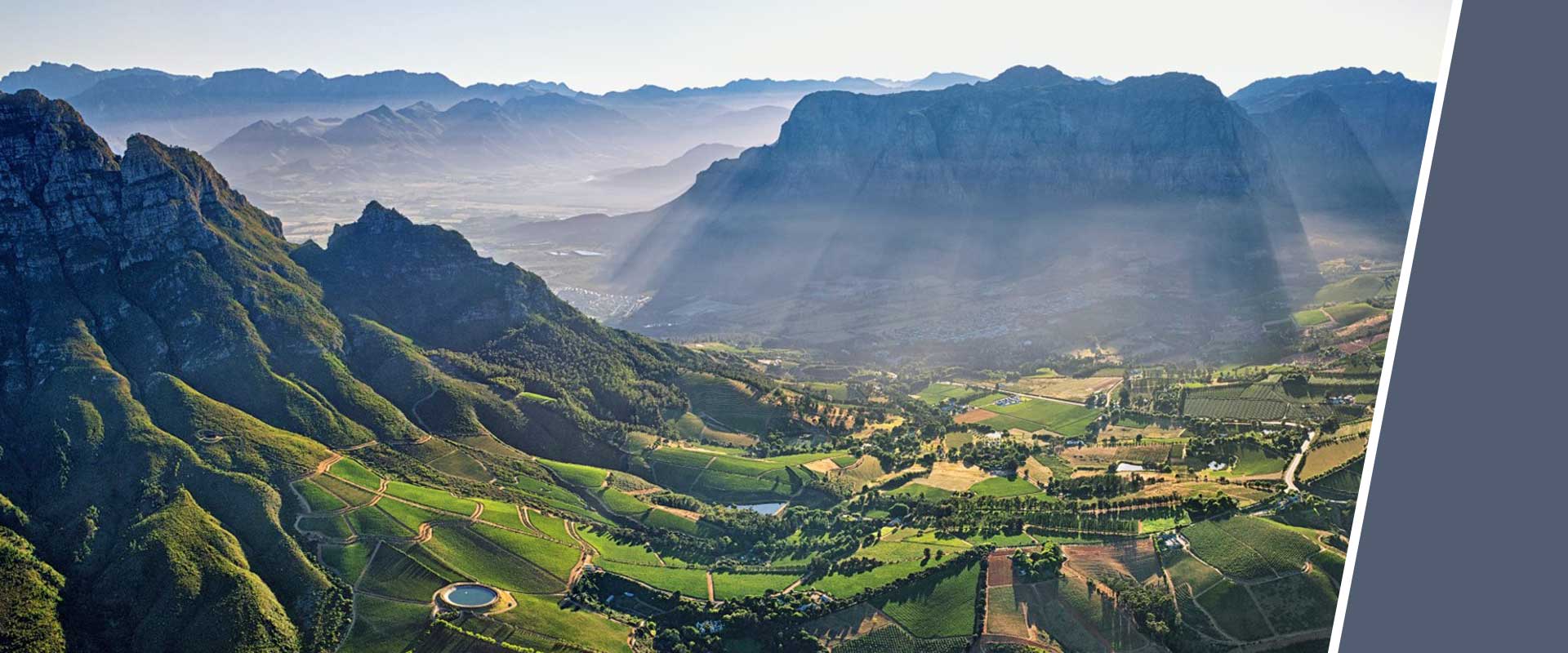
Cellar Technology in South Africa
Recently, modern cellar technology in South Africa allows for true premium wine to be created at each individual winery. The transport of the grapes from the vineyard to the cellar and the further processing plays a significant role. When using boxes that are too large, the upper layers of grapes put pressure onto the bottom ones that are subsequently squeezed and juice starts coming out. Many South African winemakers use small boxes for the harvest and transport to prevent this from happening; it does increase the effort, but pays off in terms of the wine’s quality.
Pressing and Vinifying the Grapes
Ideally, the grapes reach the winery mostly unscathed. Before the winemakers process them further, another selection takes place. On the off-chance that a mouldy fruit has made it so far, it can be removed at this stage. Additionally, trained staff can take away any dirt remains or small twigs as well as leaves from the grapes. Up until here, there is no distinction made between red and white wine grapes, but they take different paths from now on. Generally, white wine grapes are pressed directly after the harvest, the sticky juice is separated from peel remains and stems and is then taken to fermentation. Red wine grapes on the other hand are pressed to a mash of juice, peels and possibly stems. The reason is that the colouring agents and tannins are located on the peels and plant residues which is why they have to be included when producing red wine. Pure juice is preferred for a white wine which is why the parts are separated before fermentation. A rosé is created from red grapes that stay in the mash for a short amount of time. The plant residues are removed from the actual grape juice at a moment defined by the winemaker that lies in between the ones from white and red grapes.
Horizontal and Pneumatic Presses
Most of South Africa’s wineries use either horizontal or pneumatic presses in their wine cellars. With horizontal presses, the vintners pour in the grapes or mash on the top into a screen cylinder. At that moment, the winemaker has to use his skill and experience: if he puts too little pressure on, the juice can lay on top of the grapes and plant residues for too long, and if he uses too much pressure, the important elements cannot be sufficiently absorbed. Depending on the grape variety and vintage, the perfect relation has to be determined over and over again.
The disadvantage of those horizontal presses is that it is difficult to learn to handle them correctly. Additionally, you always need a certain basic amount of grapes to be able to press at all. The pneumatic presses constitute a logical advancement and are a solution for these exact problems. The winemaker fills the grapes or mash into a laying cylinder with an air bag in its centre. When filling this bag with air, the grapes are pressed against the walls of the cylinder - they are gently pressed and the juice can drain away freely. The great advantage of these pneumatic presses is their exact controllability; the vintners can precisely regulate how strong or gently they want to press the fruits. Since its introduction, this way of pressing has been delivering the best results which is why many South African winemakers extract the juice using this method.
